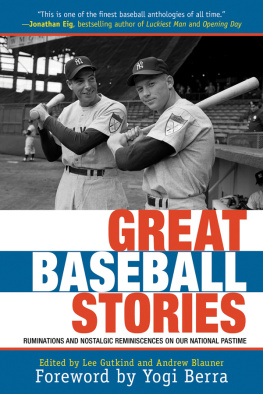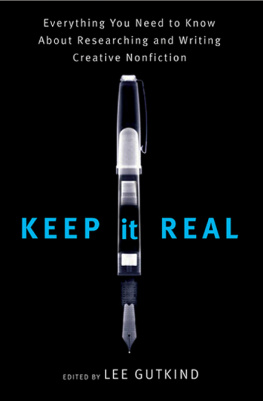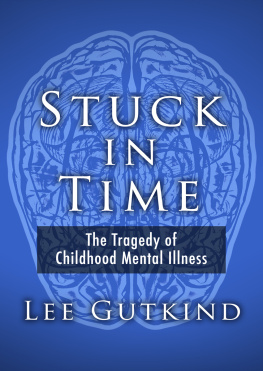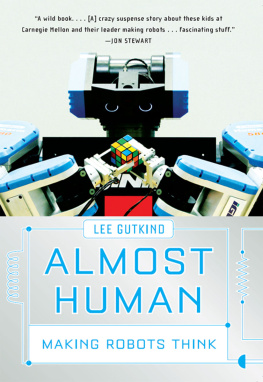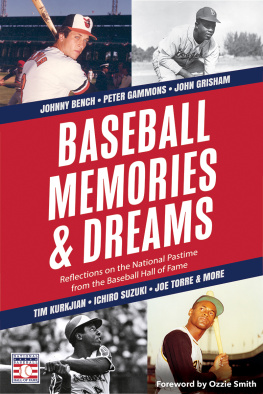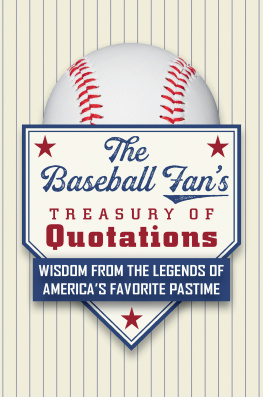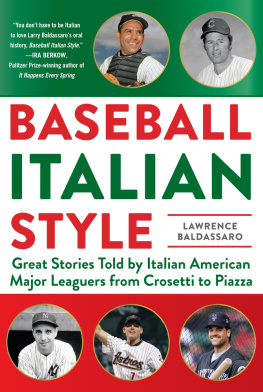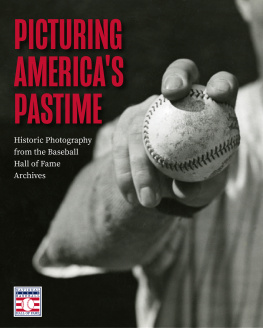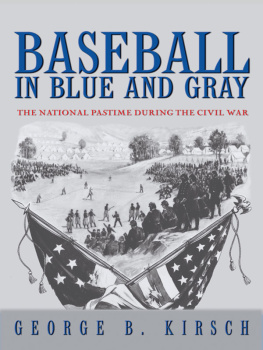Copyright 2008, 2012 by the Creative Nonfiction Foundation
On the Ball is reprinted by permission of International Creative Management, Inc. Copyright 1976 by Roger Angell.
Field of Dreams is reprinted by permission of Russell & Volkening as agents for the author. Copyright 2000 by George Plimpton.
Lyrics from Playing Right Field, (aka Right Field) printed by permission of Willy Welch. Copyright 1986 by Playing Right Music.
All Rights Reserved. No part of this book may be reproduced in any manner without the express written consent of the publisher, except in the case of brief excerpts in critical reviews or articles. All inquiries should be addressed to Skyhorse Publishing, 307 West 36th Street, 11th Floor, New York, NY 10018.
Skyhorse Publishing books may be purchased in bulk at special discounts for sales promotion, corporate gifts, fund-raising, or educational purposes. Special editions can also be created to specifications. For details, contact the Special Sales Department, Skyhorse Publishing, 307 West 36th Street, 11th Floor, New York, NY 10018 or .
Skyhorse and Skyhorse Publishing are registered trademarks of Skyhorse Publishing, Inc., a Delaware corporation.
Visit our website at www.skyhorsepublishing.com.
10 9 8 7 6 5 4 3 2 1
Library of Congress Cataloging-in-Publication Data is available on file.
ISBN: 978-1-61608-603-9
Printed in China

The editors would like to thank Hattie Fletcher and Donna Hogarty at Creative Nonfiction for their essential help with coordinating this project. Thanks as well to Keith Gregory, Kathryn Lang, and George Ann Ratchford at Southern Methodist University Press for their friendship and encouragement.

The Creative Nonfiction Foundation also thanks the Juliet Lea Hillman Simonds Foundation and the Pennsylvania Council on the Arts, whose generous ongoing support makes all of CNFs projects possible.

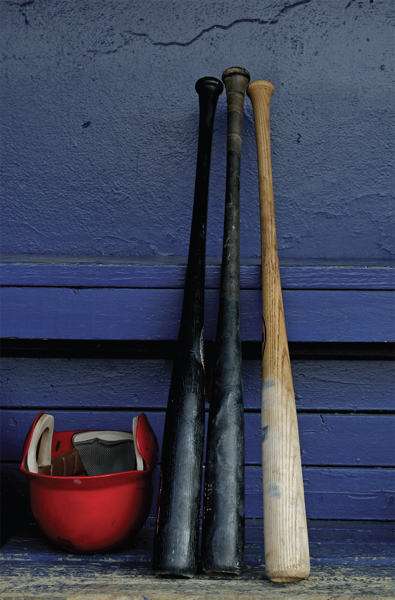
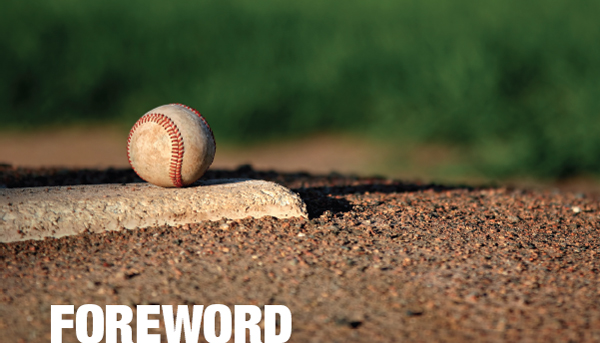
Yogi Berra
B aseball to me is the greatest game. Its loved and played and watched all over the world. Whenever people ask what I wouldve done without baseball, I dont know. I played it because it wasnt work, but I worked at it because I loved to play. What Ive truly learned is the game is more than a game. Sure its a business, getting bigger all the time. But it still has an uncanny way of getting into peoples hearts and mindswhat other business can say that? Its been over a half-century since I last played a major league game, but I observe and follow and read about the game as much as ever. That doesnt mean Ill ever know all there is to know, and thats the beauty. Like Ive always said, in baseball you dont know nothing. Or if you ask me a question I dont know, Im not going to answer. But this much I know. Baseball remains a great game because people still worship and argue about it and theyre going to games in record numbers. People still make movies about it. People dream up fantasy teams and go to fantasy camps. People keep analyzing and concocting statistics. And authors never stop writing about the game. Simply, baseball makes great baseball literature. The tittle of the previous edition of this book is no medical bookif it was, Im certain I wouldnt have read it. Its a baseball book, and a good one, and its nice to be in a lineup that includes some pretty good writers. A good book makes you think about things you might not already think about. Or enjoy stories from writers you maybe dont know. Of course, I was never good with writers names. A long time ago, somebody introduced me to Ernest Hemingway, mentioning that he was a great writer. So I asked, Which paper? That was when most of my reading consisted of the sports pages and comic books. But Hemingway was a big baseball fan. No surprise he used the game in his writing, especially in The Old Man and the Sea, referring to my old teammate Joe DiMaggio and the main character missing the daily box scores. Baseball has its own literature. It even has its own language. The game goes back to before the Civil War, but it never gets old. Neither does a good baseball book.
September 2007

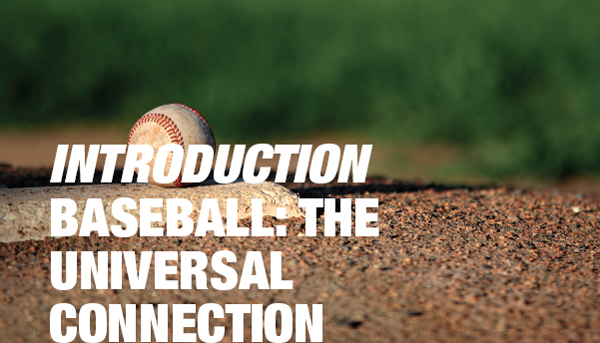
Lee Gutkind
D uring the spring of 2007, I taught a graduate-level writing workshop in creative nonfiction to a group of students, mostly fiction writers, enrolled in the MFA program at Arizona State University, where I was serving as writer-in-residence. When I teach this type of course, I usually assign at least one immersion essay; I choose a general subject and ask my students to involve themselves in it somehow and write about what they learn and experience.
There are several reasons for this immersion assignment. I want emerging creative nonfiction writers to understand that there are often subjects more important and more interesting than themselves; that theres a rich and colorful world, with an unlimited cast of characters, just waiting to be captured dramatically in prose, wherever you live or visit; and that writers, especially students, need to try to remove themselves from their campuses and neighborhoods and experience new things.
I also want students to see how many different angles there are to any given subject. There are unlimited potential crevices and corners to mine for essay materialenough for each member of a class to choose a different approach. I have used medicine and dogs as subject prompts in Pittsburgh, where I usually teach, and bullfighting in Spain. At Arizona State, I chose baseball, because almost half of major league baseball teams conduct spring training nearby; there are at least four ballparks within a half-hour drive of Tempe, near Phoenix, where ASU is located, and two in walking distancedepending, of course, on the heat of the day.
I have to admit that immersion is not a universally popular assignment. For one thing, it forces more work on students than writing straight memoir; they must research a subject, something they dont know a lot about, and take the timeday or night, holiday and weekend, on a somewhat regular basisto meet the right people and find a story worth telling.
Although I cannot say my students were chomping at the bit to go to the ballpark, I did immediately notice the way in which baseball (the subject, if not the assignment) brought them together. There were three men in the classJake, Aaron, and Cameronand although they had grown up in different parts of the country, discussions of baseball made their differences in background seem almost nonexistent. They shared a common language, from discussing ballparks in their hometowns and comparing them with parks they had visited in Arizona and elsewhere, to the ways in which their favorite players held their bats, along with baseball memories and legacies passed on to them by their fathers and mentors.
Next page
